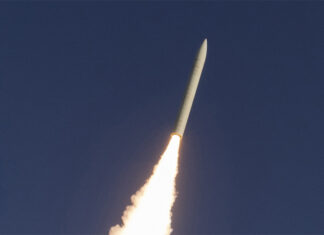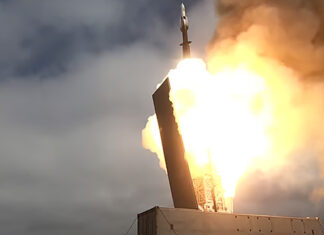DARPA and the U.S. Office of Naval Research are embarking on the development of a new offensive surface weapon called Long Range Anti-Ship Missile (LRASM), capable of outperforming adversary anti-ship missiles and air and missile defenses. DARPA goal for the program is to fly a technology demonstration missile of sufficient maturity to support rapid transition to operational use.
“LRASM is an effort to place the US Navy in a dominant position on the high seas” says Rob McHenry, a program manager in the Tactical Technology Office at DARPA. “We want US Navy cruisers and destroyers to be able to stand off from outside of potential adversaries’ direct counter fire range, and be able to safely engage and destroy high value targets they may be engaging against from extended range, well beyond potential adversary ranges that we may have to face.” Said McHenry. “Once the missile flies that far, it has a requirement to be able to independently detect and validate the target that it was shot at. Finding that target, the missile will have to be able to penetrate the air defenses and finally, once it gets to that target, it has to have a lethal capability to make a difference once it gets there.”
LRASM will be different from current generation missiles such as the Harpoon and Tomahawk, which are dependent on prior intelligence and targeting data. Unlike those missiles, LRASM will be designed to reduce dependence on precision intelligence, surveillance and reconnaissance sources, data links, and GPS. The missile will employ advanced onboard sensing and processing capabilities, allowing precision engagement of moving ships based only on coarse, initial target cueing, even in extremely hostile environments. LRASM will be designed to be compatible with existing VL-41 Vertical Launch System employed by the U.S. Navy and will have sufficient range to engage targets from well beyond direct counter-fire ranges of projected threats. To further improve its effectiveness the missile will also employ innovative features that to survive enemy air defenses and deliver high-assurance lethality.
Lockheed Martin Corp. Missiles and Fire Control has been awarded a $10 million contract by the U.S. Defense Advanced Research Projects Agency (DARPA) for the development and demonstration of the LRASM. The agency is expected to award additional contracts for the initial demonstration phase.
During this phase, contractors will conduct trade studies and system performance analysis, develop a preliminary design, and perform risk reduction testing of critical elements of their system. This phase will conclude with a Preliminary Design Review, operational effectiveness assessment, and evaluation of the technology development plan to complete the remaining DARPA demonstration program and operational transition to the Navy. The next phase could span over 27 months and include system design refinement, subsystem developmental testing, to be followed by Critical Design Review, and flight tests culminating in an end-to-end flight demonstration of missile’s.



















